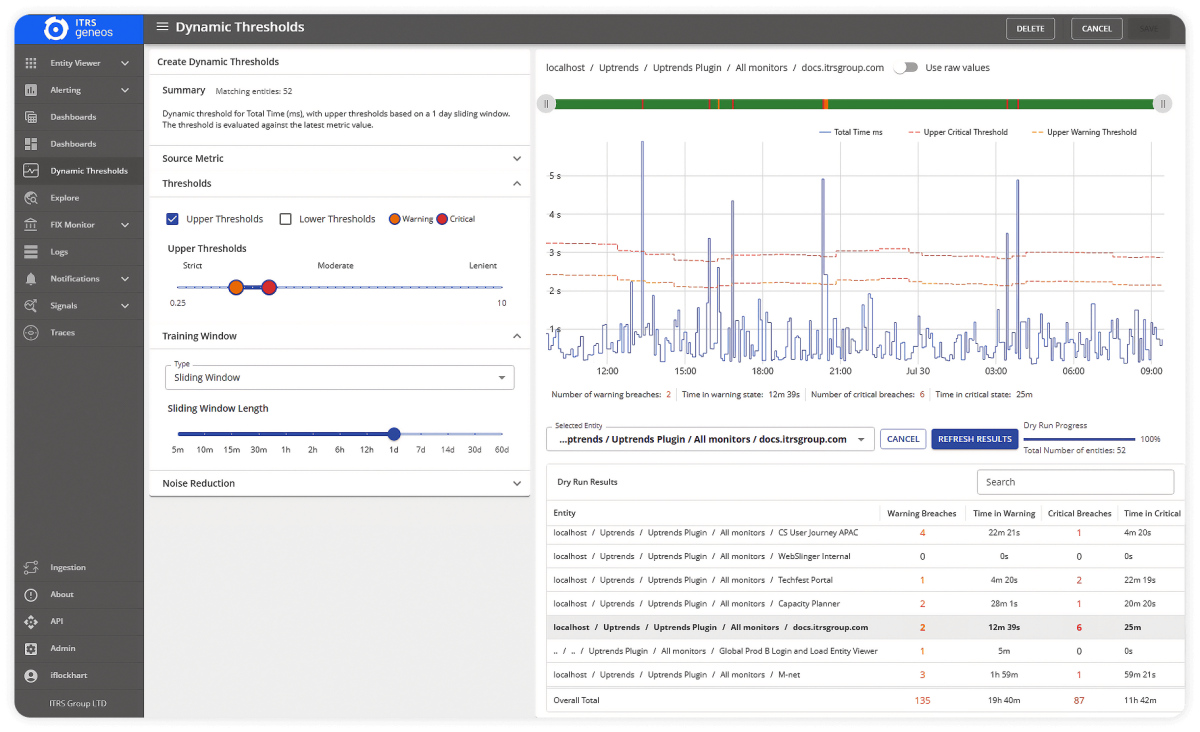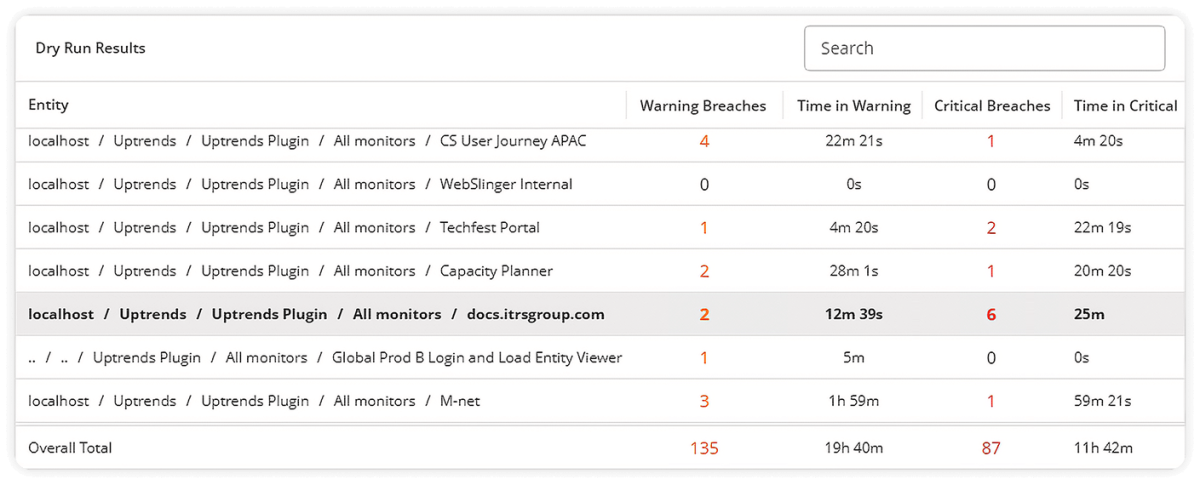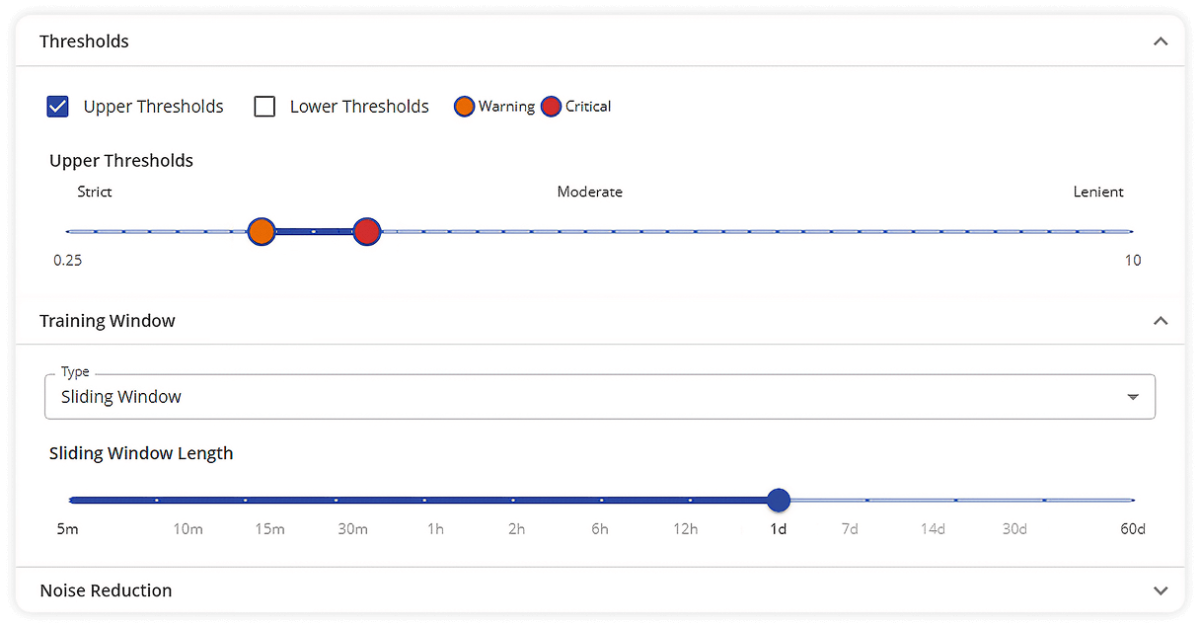Introducing Dynamic Thresholds
Smarter, adaptive monitoring for real-time production environments
ITRS is recognized in the 2025 Gartner® Magic Quadrant™ for Observability Platforms
Smarter, adaptive monitoring for real-time production environments

Dynamic Thresholds from ITRS Geneos brings intelligent, context-aware alerting to your hybrid IT estate – helping operations teams stay ahead of emerging issues without drowning in false positives.

As modern trading environments and financial systems scale in complexity, static thresholds fail to keep pace. They miss meaningful deviations and flood teams with alerts that don’t matter.
Dynamic Thresholds uses AIOps-driven baselining to continuously learn your system’s normal patterns and automatically adjust thresholds. The result:

Adaptive baselining
Learns seasonality and patterns in your data across trading days, weekends, or regulatory cutoffs. (e.g., adjusts thresholds automatically for 4 daily trading peaks).
Multi-layer modeling
Models at different granularities (e.g., 5-minute intervals, hourly trends) to capture both sudden spikes and slow drifts.
Real-time learning
Ingests live data to refine thresholds continuously – no static rules to maintain.
Seamless integration
Works natively in Geneos 7 across on-premises, cloud, and hybrid architectures.

1. Detect sudden transaction volume surges
A Tier 1 bank’s trading support team identifies unusual spikes in FIX message rates minutes before cascading failures.
2. Prevent overnight batch failures
Catch slow drifts in processing times during end-of-day settlements that static thresholds overlook.
3. Monitor market data feeds with confidence
Model normal latency patterns for volatile market events and flag true anomalies without over-alerting.
4. Reduce regulatory risk
Stay ahead of compliance SLAs by detecting subtle degradations in service before customers are impacted.
Book a demo – See Dynamic Thresholds in action for your environment